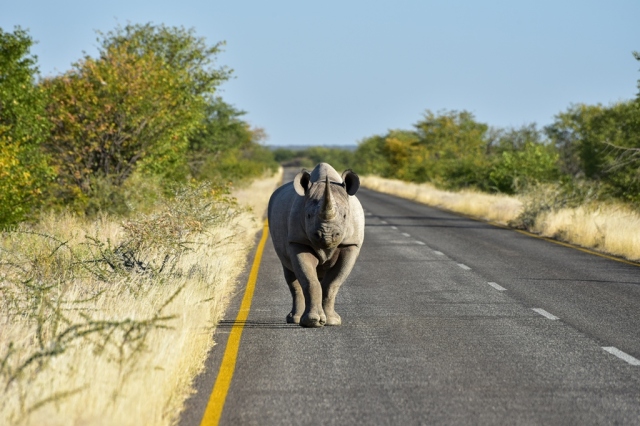
Roadkill is not an everyday sighting you expect or want to see in a national park, so it is with some sadness that we received a report of a Cheetah killed on the road in one of our protected areas on Freedom Day last week. Four Cheetah roadkill incidents have been submitted to the Endangered Wildlife Trust’s (EWT) roadkill database since 2013. However, none of these were in protected areas, all having occurred on our regional and national roads. The research that has been conducted by the EWT in protected areas in recent years indicates that speeding may not be the primary cause of roadkill in protected areas.
The Endangered Wildlife Trust’s Wildlife and Roads Project (EWT-WRP) has been gathering roadkill data on regional and national roads across the country since 2010, including a number of roads in protected areas. This is in an effort to understand which species are most at risk and to then use this information to propose preventative measures to reduce roadkill.
In 2014, the WRP expanded its data collection to include protected areas, as evidence suggested that wildlife is also being killed on roads in our national parks and protected areas. Following surveys conducted in the Pilanesberg National Park and the Addo Elephant National Park in 2014 and 2015, a number of species were found dead on the road in both parks, and Wendy Collinson, the project executant of the WRP set out to find out why.
From questionnaire surveys conducted amongst visitors to the parks, the majority of respondents believed speeding vehicles to be the culprit for animals killed on the roads in protected areas. Collinson investigated this through the use of traffic monitoring devices and found that this was not always the case and that compliance with park speed limits was found to be reasonably high. “We postulated that roadkills were likely to occur because drivers were unaware of their surroundings and therefore drove over animals on the road through lack of attention. To investigate this factor we monitored a sample of 450 vehicles and nearly 70% of the drivers were observed to not be looking at the road, but rather scanning the bush for wildlife”, said Collinson. “This suggests that many roadkills in national parks happen because of the expectation that animals are to be found in the habitat alongside the road, rather than on the road itself”, she added.
The same sample of vehicles was used to investigate the role of speed in determining rates of roadkill. The research team placed a fake snake on the road, and recorded how many times it was ‘hit’ and the speed at which the vehicle was travelling. We found that approximately 50% of drivers hit the fake snake. “From our survey, it seems that observation levels of the driver, rather than the speed of the vehicle, is the key factor in causing roadkill,” Collinson commented.
Armed with a better understanding of the reasons why roadkill may be happening in national parks, the research team will be returning to Pilanesberg National Park to undertake follow-up work later this year. “One of our recommendations from the roadkill survey is that a driver awareness campaign is launched in parks to make drivers more aware of animals on the roads themselves,” Collinson commented. “We plan to test a number of awareness-measures with visitors to the park and to assess which method works best. This will guide us with future decisions in other parks that will improve the quality of the experience of park visitors and safeguard the animals in these protected areas,” she concluded. The next stage of the project will commence shortly in Pilanesberg National Park, Hluhluwe iMfolozi Park, and possibly also in the Kruger National Park and Table Mountain National Park.
The EWT’s Wildlife and Roads Project in Protected Areas is supported by Bridgestone SA, Copenhagen Zoo and Mikros Traffic Monitoring. Collaborations include: Rhodes University, University of KZN, North West Parks and Tourism Board, South African National Parks and Africa:Live. End.
Contact: Wendy Collinson
Project executant: Wildlife and Roads Project
Endangered Wildlife Trust
Tel: +27 11 372 3600
wendyc@ewt.org.za
and
Constant Hoogstad
Manager: Wildlife and Energy Programme & Wildlife and Roads Project
Endangered Wildlife Trust
Tel: +27 11 372 3600
constanth@ewt.org.za
